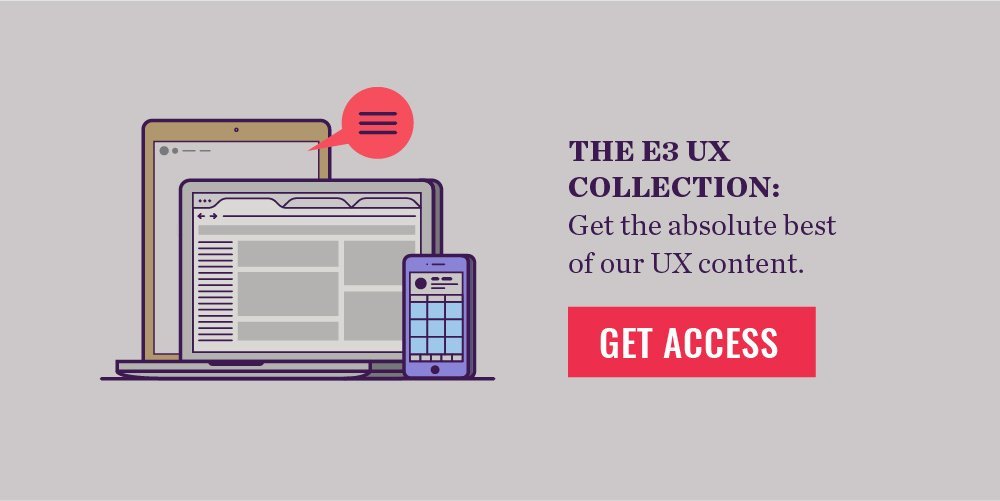2017 will not only be the year of refinement, it may also be the biggest hiring year ever for User Interaction and User Experience (UI/UX) professionals.
Between constantly changing in audience habits and the surge of new platforms and innovative devices, it’s a wonder any professional’s skills can stay relevant. The need for cohesive experiences across multiple platforms will only continue to grow with this change, further blurring the lines between previously separate experiences. Professionals are needed to help shape these experiences, making them more tactical and purposeful for the user. We’re finding it is more important to focus on an individual’s understanding and approach to complex problems rather than a particular skillset.
Finding value in a UI/UX designer
We’ve all experienced a phone call or meeting in which our team members or partners become fixated on an exciting new trend, and push for it to be implemented. Sometimes we can be guilty of it ourselves. Remember the QR craze?
A number of problems immediately follow a request like this:
- How do we shoehorn this idea into our current offerings?
- Does it fit with our brand?
- Will the idea become disjointed and, in the end, low-performing and off-putting to the user?
Trends will continue to push for more tactile experiences via haptic feedback, micro animation, virtual and augmented reality, and chatbots, while working to bridge the platform gap through age-responsive design. Consequently, the need for professionals to shape those experiences to make them more purposeful for audiences – and help them fit into our marketing organically – will continue to grow.
And while this need for strategic problem solving continues, where will these professionals come from?
Where does a UI/UX Designer Come From?
The current need for UI/UX professionals has created an education demand which is being fulfilled in a variety of ways.
The Evolved Professional
Many UI/UX professionals have evolved out of other industries. Let’s take an Art Director, for example. An understanding of the creative process and how to utilize those tools and experiences to help frame solutions for the complex human-centered problems of UI/UX has become more necessary while working with today’s products and services.
These professionals offer cross-disciplinary skills which could be beneficial in a variety of ways, including helping a team to move forward toward a final design solution.
Boot Camps
Like CrossFit, boot camps provide an immersive experience for professionals in all stages of their career fitness. Offering both full and part-time experiences, boot camps provide students an engaging opportunity to conduct research, communicate a vision, and design high-level solutions for real-world clients.
Boot camps are not only a great option for career-evolving professionals, but they also provide development opportunities within your own organization. And don’t assume these workshops are only for designers; many are appealing to individuals with no prior design knowledge.
Two-and-Four-Year College Programs
Starting early has always been a great path to success. Over the past few years, two-and-four year UX/UI programs have begun at a number of universities. For example, in our hometown of Indianapolis, the School of Informatics and Computing at IUPUI has developed a graduate and Ph.D. program entitled “Human-Computer Interaction and Design” with an “emphasis on design principles and creative problem-solving.” IUPUI is working to help set a precedent in this industry for helping students prepare to enter a constantly shifting marketplace.
Though each school offers their own interpretation and model of the curriculum they feel will lead their students to success, they all focus on the same fundamentals of user experience, technology, and visual communication, giving these strategic design thinkers a leg up on their non-traditional competition.
Whatever educational background these professionals emerge from, they will be playing larger strategic roles across many different teams in 2017. Not only will they help to inform smarter decisions for the work we produce, they will help us develop more meaningful and seamless experiences for our customers.
What to Look for in Your Next UI/UX Hire
As you plan for your next UI/UX professional hire in 2017, consider someone with the following expertise:
- Information, Architecture & Visual Design
- Design Process Management
Areas of knowledge and experience every UI/UX professional should have:
- An understanding of the soft skills (Empathy, Curiosity, Communication)
- Information Architecture
- User Research Practice
- Information Design
- Visual Design
- Informational Design
- Copywriting
- Design Process Management
- Editing and Curating (keeping things simple)
Tips for the Developing UI/UX Professional
Want to become a UI/UX expert? Here are some self-taught methods to get there.
1. Train yourself on the topics (book knowledge). Some favorites:
- UX Booth’s Blog
- Designing for the Digital Age by Kim Goodwin
- 100 Things Every Designer Needs to Know about People by Susan Weinschenk
- About Face: The Essentials of Interaction Design by Alan Cooper
- Users, Not Customers by Aaron Shapiro
- The Design of Everyday Things by Don Norman
2. Practice your new skills (implement this knowledge in your work)
3. Deconstruct as many designs as you can (learn how to build something similar using these processes)
4. Seek out feedback (find persons who can provide constructive feedback)
5. Teach others (we don’t truly learn something until we can teach it)






